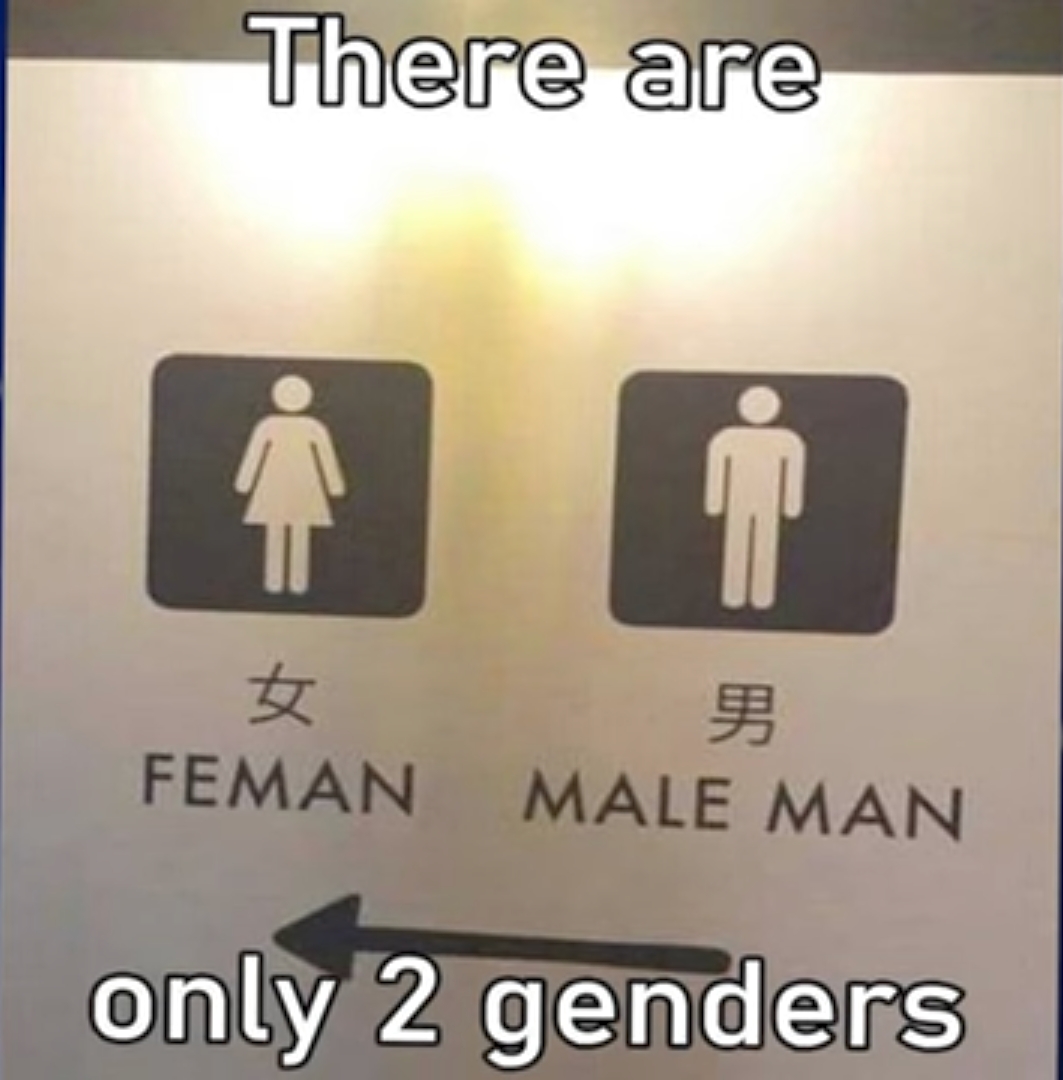this post was submitted on 23 Oct 2023
599 points (96.4% liked)
Memes
45680 readers
784 users here now
Rules:
- Be civil and nice.
- Try not to excessively repost, as a rule of thumb, wait at least 2 months to do it if you have to.
founded 5 years ago
MODERATORS
you are viewing a single comment's thread
view the rest of the comments
view the rest of the comments

Interesting. In German there is the old (biblical) word "Männin". Which is literally the female form of "Mann" (man). Maybe the original language the translation comes from has something similar.
I'm guessing it was someone doing translations, getting confused, playing it safe, and accidentally recreating Old English.
This is either Chinese or Japanese on the sign. But Japanese derrived from Chinese so both langues have the same origin for a lot of words:
Male 男 is a compound word of Field and Strength.
Woman 女 is a pictogram of a woman with breasts kneeling. A bit easier to see in the non-modern symbol. And pretty blatant when you compare it to the modern symbol for mother 母 which is taking the old symbol and adding two nipples.
So nothing in the original language for this translation error to make sense.
But English has roots for "feman" to technically make sense. In Old English there used to be "man" meaning "person" and "wif" meaning "female". This turned in to "wifman" meaning woman. Recently "wif" turned into "wife" and "wifman" turned in to "woman".
In their language there are two distinct words for "woman" and "man" so when they got "male" for 男 they went "ok cool now on to 女", and got "female". Now that's basically the same word... So they backed up and retranslated 男 to "man"... Then got "woman" for 女.
Now pretty unsure they looked up "man" and got that it could just mean "person". Then they put "male" "man" for male person. Then they got really confused and instead of "female" "man" for "female person" they cut out the "male" and put "fe" "man" essentially re-inventing the word "wifman".
And finally somewhere along the way they found out about prefixes which fe- kinda acts like so that's why there's a space in "male man" and no space in "feman"
Another funny detail I've heard: the Old English word for a male person was something like "were", as in "werewolf".
Thanks to the in depth explanation.
Männin is more of a word Luther came up with when translating the bible and no one used ever since (except in quoting Luther of cause).
The thing is that in Hebrew, man and woman are the same but with other ending. Luther tried to recreate that.
Thanks for the info. Serious discussion under a meme post :-)